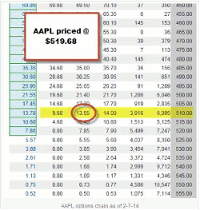While it happens rarely, early exercise is still possible, so option expert Alan Ellman of TheBlueCollarInvestor.com advises covered call writers to understand the relationship between option time value and dividend amount along with knowing the ex-dates to avoid it.
Covered call writing obligates us to sell our shares to the option buyer at any time up to 4:00 pm ET on expiration Friday should the buyer choose to exercise those options. That is the definition of American-style options, the type we are dealing with when selling options against stocks and ETFs. The buyer is in control unless we buy back the option. Now, we may not want our shares sold and there is so much we can do to prevent exercise from occurring but it is one of the risks we are exposed to as covered call writers. For those of us trading in sheltered accounts, exercise risk is miniscule. For investors trading in non-sheltered accounts, there may be tax consequences. It is important to understand all the pros and cons of any investment strategy we are using and to discuss tax issues with our tax advisors.
On February 7, 2014, Alex wrote me about the following trade he executed (I will reduce to 1-contract statistics):
Buy 100 x AAPL @ $502
Sell 1 x February $510 call
Stock price currently @ $520
Alex felt that early exercise was imminent and wanted to roll up to retain his shares. His other concern was that because AAPL was experiencing volatility, it would result in a lot of “buying and selling” during the current contract.
Let’s for a moment change hats and take the position of the option buyer who holds a call contract giving him (her) the right but not the obligation to purchase AAPL @ $510. At the time, AAPL was trading @ $519.68.
Credit for early exercise:
Buy AAPL @ $510
Sell AAPL @ $519.68
Credit = $9.68
Credit for selling the option:
Here is the options chain at the time I am writing this article:
The published bid = $13.55, $387 per contract more than taking the route of early exercise. Any educated option buyer would not take the route of early exercise. The key point to take away is that early exercise captures intrinsic value only, whereas selling the option also captures time value.
Aside from the option buyer doing the wrong thing, there is one exception to this rule. When there is a dividend distribution, it may make sense for the option holder to exercise early. If the dividend about to be distributed is greater than the time value remaining on the option premium it is possible that early exercise will occur…not guaranteed. When this does occur, it will take place the day before the ex-dividend date (date you must own the shares to benefit from the dividend distribution). To avoid this small chance of early exercise, we must check this ex-date and buy back (or roll) the option prior to the ex-date. I checked the ex-date when Alex wrote me and, as it turned out, it was on February 6, the day prior to his email so this was a non-factor.
List of “banned stocks”
In our BCI methodology, we avoid companies that report same-store retail sales on a monthly basis. We refer to these companies as “banned” from consideration in our BCI methodology because of the volatility surrounding these reports and the possibility of a disappointment and share depreciation. Over the years, that list has had expanded to as many as 80 stocks. In the past few years, companies have been opting out of reporting on a monthly basis like it was the plague and that list has diminished to under 10 (we are still researching to see if there are any companies that should be added to the list below). We have updated this list, which now includes the following stocks:
The Buckle, Inc. (BKE)
Cato Corp. (CATO)
Costco Wholesale Corp. (COST)
Gap, Inc. (GPS)
L Brands (LB)
Stein Mart Inc. (SMRT)
Walgreen (WAG)
Zumiez (ZUMZ)
Summary:
Early exercise is very rare but possible. The main reason it will occur is investor error or dividend distribution. Understanding the relationship between option time value and dividend amount along with knowing the ex-dates will generally avoid early exercise. Although small, the risk will always exist for early exercise.
By Alan Ellman of TheBlueCollarInvestor.com











